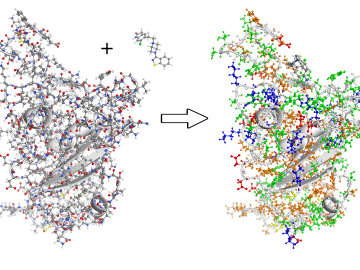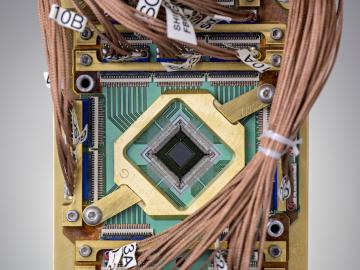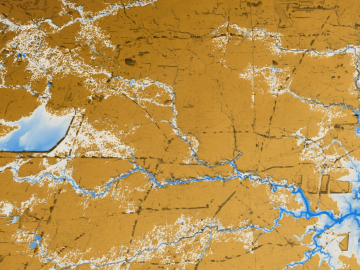
Filter News
Area of Research
- (-) Advanced Manufacturing (6)
- (-) Supercomputing (65)
- Biology and Environment (62)
- Biology and Soft Matter (1)
- Computational Engineering (2)
- Computer Science (10)
- Electricity and Smart Grid (3)
- Energy Science (108)
- Functional Materials for Energy (1)
- Fusion and Fission (7)
- Fusion Energy (2)
- Isotope Development and Production (1)
- Isotopes (3)
- Materials (94)
- Materials Characterization (1)
- Materials for Computing (15)
- Materials Under Extremes (1)
- Mathematics (1)
- National Security (24)
- Neutron Science (32)
- Nuclear Science and Technology (4)
- Quantum information Science (9)
- Sensors and Controls (1)
- Transportation Systems (2)
News Topics
- (-) Grid (5)
- (-) Machine Learning (16)
- (-) Materials Science (21)
- (-) Quantum Science (25)
- 3-D Printing/Advanced Manufacturing (25)
- Advanced Reactors (2)
- Artificial Intelligence (38)
- Big Data (22)
- Bioenergy (9)
- Biology (11)
- Biomedical (17)
- Biotechnology (2)
- Buildings (4)
- Chemical Sciences (5)
- Composites (3)
- Computer Science (96)
- Coronavirus (14)
- Critical Materials (3)
- Cybersecurity (8)
- Energy Storage (8)
- Environment (22)
- Exascale Computing (26)
- Frontier (32)
- Fusion (2)
- High-Performance Computing (43)
- Isotopes (2)
- Materials (21)
- Mathematics (2)
- Microscopy (7)
- Molten Salt (1)
- Nanotechnology (11)
- National Security (8)
- Neutron Science (15)
- Nuclear Energy (5)
- Partnerships (1)
- Physics (8)
- Polymers (2)
- Quantum Computing (20)
- Security (6)
- Simulation (16)
- Software (1)
- Space Exploration (4)
- Summit (43)
- Transportation (6)
Media Contacts

To better understand the spread of SARS-CoV-2, the virus that causes COVID-19, Oak Ridge National Laboratory researchers have harnessed the power of supercomputers to accurately model the spike protein that binds the novel coronavirus to a human cell receptor.

Oak Ridge National Laboratory researchers have demonstrated that a new class of superalloys made of cobalt and nickel remains crack-free and defect-resistant in extreme heat, making them conducive for use in metal-based 3D printing applications.

A multi-institutional team became the first to generate accurate results from materials science simulations on a quantum computer that can be verified with neutron scattering experiments and other practical techniques.

A new tool from Oak Ridge National Laboratory can help planners, emergency responders and scientists visualize how flood waters will spread for any scenario and terrain.

Six scientists at the Department of Energy’s Oak Ridge National Laboratory were named Battelle Distinguished Inventors, in recognition of obtaining 14 or more patents during their careers at the lab.

Six ORNL scientists have been elected as fellows to the American Association for the Advancement of Science, or AAAS.

The combination of bioenergy with carbon capture and storage could cost-effectively sequester hundreds of millions of metric tons per year of carbon dioxide in the United States, making it a competitive solution for carbon management, according to a new analysis by ORNL scientists.

Kübra Yeter-Aydeniz, a postdoctoral researcher, was recently named the Turkish Women in Science group’s “Scientist of the Week.”

Researchers at ORNL used quantum optics to advance state-of-the-art microscopy and illuminate a path to detecting material properties with greater sensitivity than is possible with traditional tools.

Oak Ridge National Laboratory scientists have discovered a cost-effective way to significantly improve the mechanical performance of common polymer nanocomposite materials.


